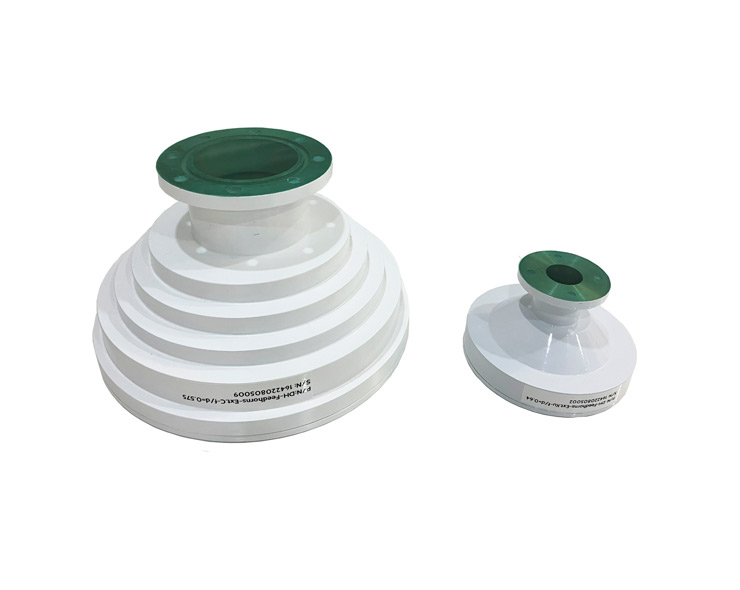Dolph has developed a comprehensive line of antenna feeds covering C, X, Ku and Ka bands. The devices in these assemblies are precision machined from aluminum or copper and offer very high performance at a very competitive price. Each device is tuned to meet exacting electrical specifications. Additionally, entire feeds are assembled and tuned as a whole to provide superior performance compared to individually assembled components that are not tuned as a unit. Dolph can provide either complete feeds or standalone devices. Please call us with your specification and discuss your needs with one of our sales engineers.
Note: Take C-Band Offset Feedhorns as an example.

Ext. C-Band Offset Feedhorns for VSAT f/d = 0.575 | ||
Ext. C-Band Offset Feedhorns for VSAT f/d = 0.575 5.85 GHz to 6.725 GHz/3.4 GHz to 4.2GHz | Model: DH-Feedhorns-Ext.C-f/D=0.575 | |
Frequency Range | -Rx 3.4 GHz to 4.2 GHz -Tx 5.85 GHz to 6.725 GHz | |
VSWR | 1.2:1 | |
Insertion Loss | max. 0.15 dB | |
Circular WG Flange Interface | Φ19 mm | |
Antenna Type | Offset | |
F/D | 0.575 | |
Material | Al with Conductive oxidation | |
Finish | White Paint (standard) | |
Operating Temperature | -50° C to 85° C | |

Microwave feedhorn is a small horn antenna used to couple a waveguide to, for example, a parabolic dish or an offset dish used to receive or transmit microwaves. A typical application is the use of satellite dishes to receive satellite TV.
Microwave feedhorn is basically a horn antenna that sits between the transceiver and the antenna reflector in a satellite antenna system. When a signal from a satellite is received, the signal is reflected from the parabolic antenna to the feed horn, where it is passed to a low noise block (LNB) where it is downconverted and further processed. The feed horn provides a certain level of gain and is designed to support a specific type of polarization so that it can filter out unwanted signals by allowing only certain polar waves based on the polarization of the horn antenna.
Other antenna feeds with high quality and wide applications.